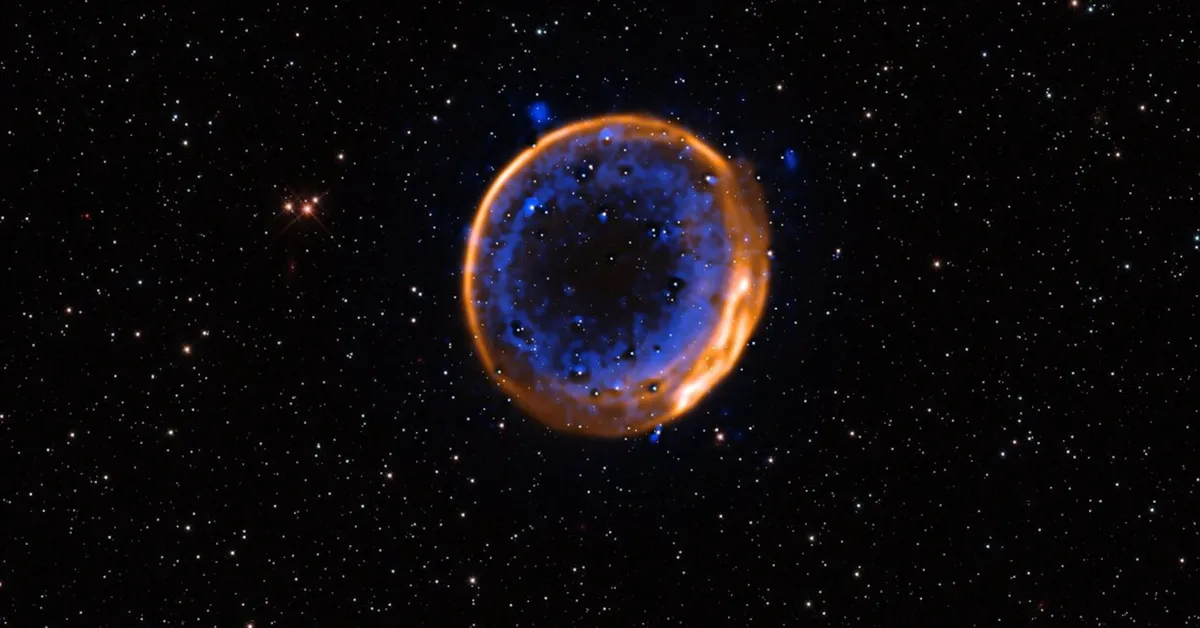
On July 2, researchers announced a significant advancement in our understanding of supernovae, particularly a rare type known as a Type Ia supernova. This discovery comes from the European Southern Observatory's Chile-based Very Large Telescope, which captured photographic evidence of a double detonation event involving a star known as a white dwarf. This groundbreaking observation marks the first time scientists have documented such an explosion, offering invaluable insights into the life cycle of stars and the chemical processes that shape our universe.
A supernova is an extraordinarily violent cosmic event, typically occurring when a star with a mass greater than eight times that of our sun exhausts its nuclear fuel. This depletion leads to a core collapse, resulting in a singular, powerful explosion. However, the newly observed Type Ia supernova presents a different scenario involving a white dwarf, which is essentially a stellar ember. In this case, two consecutive explosions obliterated a white dwarf approximately equal to our sun's mass, located about 160,000 light-years away in the direction of the constellation Dorado within the Large Magellanic Cloud, a neighboring galaxy to our Milky Way.
The photographic evidence reveals the aftermath of the explosion about 300 years post-event, showcasing two concentric shells of the element calcium expanding outward. The process behind this unique explosion involves the interaction between the white dwarf and a companion star in a binary system. The gravitational pull from the primary white dwarf leads to helium siphoning from its companion, which can be either another white dwarf or a helium-rich star. As the helium accumulates on the surface of the white dwarf, it eventually reaches a critical temperature and density, resulting in a detonation. This initial explosion creates a shockwave that compresses and ignites the core of the star, triggering a second explosion just two seconds later, according to astrophysicist Ivo Seitenzahl, a co-author of the study.
In contrast to more common supernovae, which leave behind remnants such as a neutron star or a black hole, Type Ia supernovae play a crucial role in the universe's celestial chemistry. They are responsible for the creation of heavier elements, including calcium, sulfur, and iron. Understanding these processes is vital for comprehending galactic chemical evolution, which encompasses the building blocks of planets and life itself. The recent observations also revealed a shell of sulfur surrounding the explosion site, further illustrating the elemental diversity produced by these stellar events.
The researchers utilized the Very Large Telescope's Multi-Unit Spectroscopic Explorer (MUSE) instrument to map the distribution of various chemical elements in the supernova remnants. The distinct blue hues representing calcium in the image, along with the outer and inner rings formed by the respective detonations, serve as compelling evidence of the double-detonation mechanism. "We can call this forensic astronomy—a term I coined—because we analyze the remnants of stars to understand the causes of their demise," noted co-author Das.
Stars with masses up to eight times that of our sun ultimately evolve into white dwarfs after depleting their hydrogen fuel. This leads to a gravitational collapse, shedding their outer layers during the red giant phase and leaving behind a compact core. While many white dwarfs do not explode as supernovae, the recent findings not only reinforce the existence of Type Ia supernovae but also highlight their role in enriching the universe with essential elements.
In addition to its scientific significance, the captured image offers remarkable aesthetic value. "We are witnessing the birth process of elements through the death of a star," said Seitenzahl. "The Big Bang initially produced only hydrogen, helium, and lithium. Here, we observe the formation and distribution of calcium, sulfur, and iron, illustrating a cosmic cycle of matter." This discovery not only enhances our understanding of the universe but also enriches the narrative of how elements essential for life came to be.